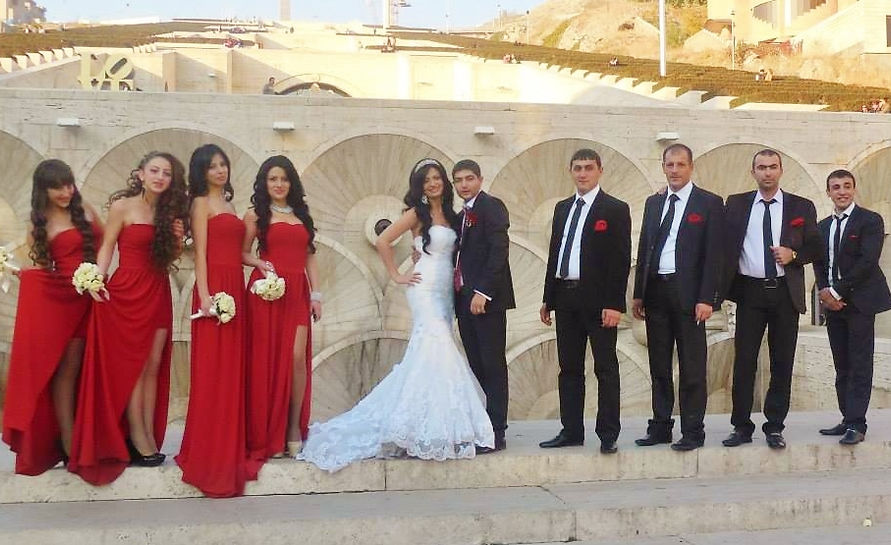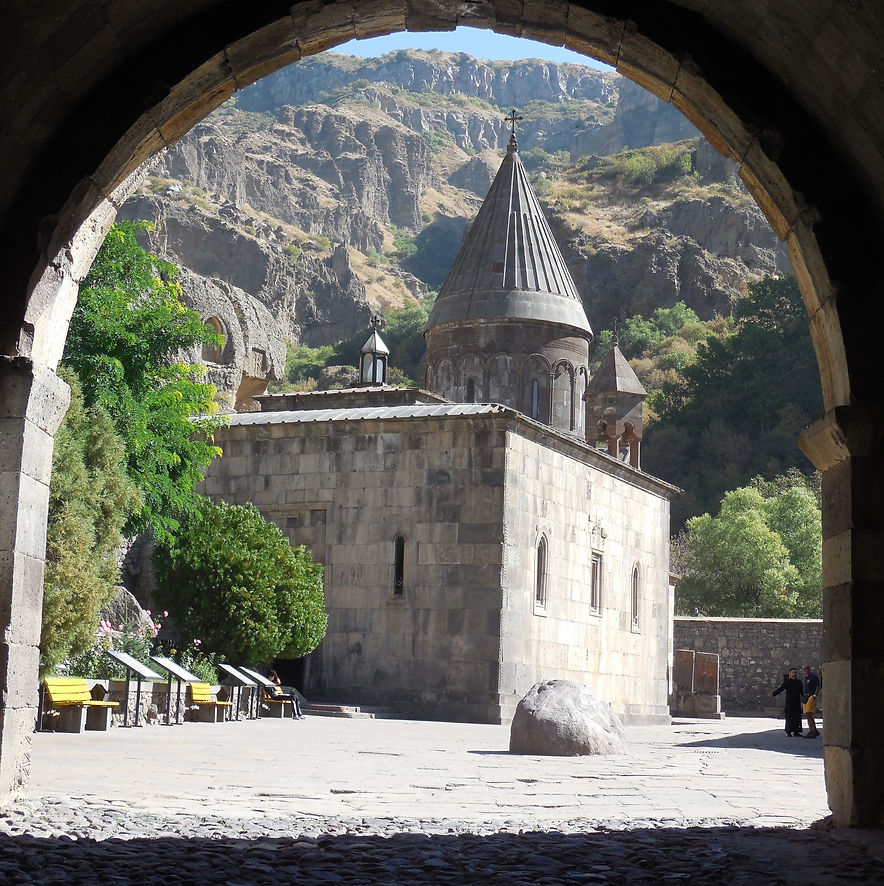
HISTORY AND TRADITIONS
I'm a title. Click here to edit me
History And Traditions
One of the incredible things about Armenia is the more you look around to discover the land, the older the place gets.
Armenian history extends for over 3,000 years. Armenians have historically inhabited the "Armenian Highlands", a vast section of mountains and valleys across eastern Anatolia and the Southern Caucasus. Throughout history the country has been a battlefield for many invaders, contending empires, and a bridge for many cultures and civilizations. Armenian vassal states, principalities, kingdoms and empires would rise and fall in different parts of this highland during history. They were only unified once, just before the time of Christ in the empire of Tigran the Great, stretching from the Caspian to the Mediterranean Sea.
Much of the history was spent under the domination of the great powers of the region. The western parts of Armenia were for long periods under Byzantine or Ottoman Turkish rule, while the eastern parts were under Persian or Russian rule. It is a rough neighborhood, but Armenians managed to hold on to their language and religion, and prosper whenever given a chance. Being located on the Silk Road, Armenians built a network of merchant communities and ties extending from eastern Asia to Venice.
On a trip to Armenia, you will be reminded on each step that Armenia was the world's first officially Christian country. You will have a hard time forgetting this as a tourist, since numerable monasteries are among Armenia's top tourist attractions. Fortunately, for those who might otherwise suffer monastery fatigue, many of these monasteries are built in places of incredible natural beauty, making the sites of monasteries like Tatev, Noravank, Haghartsin, Haghpat and Geghard well worth a visit even without the impressive, millennium old monasteries found there.
Since 2001, when Armenia celebrated the 1,700th anniversary of the nation’s conversion to Christianity, the growth in the number of tourists has grown by about 25% every year. Straddling Europe and Asia in the lesser Caucasus Mountains, an ex-Soviet state, with a culture over 3,000 years old and examples of ancient architecture and art all over the countryside, this beautiful country offers something exotic for many tourists.
Armenian tradition has preserved several legends concerning the origin of the Armenian nation. The most important of these tells of Hayk, the eponymous hero of the Armenians who called them- selves Hay and their country Hayk’ or Hayastan. The historian of the 5th century, Movses Khorenatsi, also relates at some length the brave actions of Aram whose fame extended far beyond the limits of the country. Consequently, the neighboring nations called the people Armens or Armenians. Archeology has extended the prehistory of Armenia to the Acheulian age (500,000 years ago), when hunting and gathering peoples crossed the lands in pursuit of migrating herds.
Armenia has managed to save its true spiritual riches - religion, culture and national centuries-old traditions which they strictly observe both in times of joy and in grief. Today traditions such as marriage stability, honoring of elders, strong ties among relatives, mutual readiness and help and of course hospitality have been preserved.
An Armenian wedding is a very big holiday. The ceremony includes betrothal, engagement and wedding itself. The abundance of guests at Armenian wedding is a must. The God family must be an exemplary couple. The Godfather is to bring the most expensive wedding gift. By the way, giving presents is a separate ceremony.
Wedding is accompanied by a number of various cheerful ceremonies. During the redemption of the bride any amount of money can be asked, and it's a matter of Godfather's honor to find this money; the sums are symbolical, though. The bride is taken to the altar by her sponsor and God family bear responsibility for the new family from the very beginning to end. At the wedding the bride is given a boy to cuddle – it is desirable that first-born is a boy which is now being criticized among people.
Traditionally (especially in rural areas) Armenian families used to have a lot of children. A birth of a child, for some people, especially a boy, is a happy event which has always been welcome. On church holidays in front of the house where a baby was born music played and the house was decorated with green branches – the symbol of family continuation. The child is not shown to anybody but the relatives for 40 days after birth. Nowadays, however, people do not follow these traditions much and not many families decide to have more than 2 children.
It is accepted that a person having any happy life occasion puts his hand on a head of his friend or relative saying “tarose kes” (“I pass it to you” ) – meaning to wishing the same ‘good luck’.
Another tradition we would like to highlight here is the wine and cognac making.
Any Armenian knows that Noah having stepped the land of this scared place planted the first vine-shoot there. This was the way how traditional winemaking was set up in Armenia. Armenian grape is special, with high content of sugar and therefore it “produces” more spirit. This is a simple explanation. The most popular grape varieties are akhtanak, areni, caberne, saperavi, sultana, muscat, rkatseteli used as a base to produce excellent sweet, semi-sweet and dry wines.
Armenian cognac is produced from high-quality selected grape varieties grown in the Ararat Valley. Mekhali, kakhet, garan-dmak, voskeat, chilar are the grape varieties which enrich the drink with that unusual silky astringent flavor, the taste of the native land. In the course of the first fermentation they produce wine. Then this wine is subject to three-four distillations which result in production of 60-70-degree spirit. The spirit is poured to oak casks.
The traditional Armenian clothes are very colorful and various. The traditional man's suit consisted of silk or cotton color shirt with low collar and side fastener and wide trousers from dark wool or cotton. Over the shirt Armenians put on cotton or silk arkhaluk – outerwear with low collar fastened waist down with hooks or small buttons.
Western Armenians wore a waistcoat over shirt and waist length jacket with full sleeves without fasteners in front. The belt was replaced with long wide woven scarf wrapped around the waist several times.
Women's traditional clothes of both eastern and western Armenians were homogeneous. The outerwear included a long dress of arkhaluk type with a cut on chest and cuts below hips. The waist was wrapped in long folded silk or woolen scarf. The embroidered apron and decorations were indispensable elements for western Armenian women. On their heads men wore caps of different styles: the fur ones were worn in the east; knitted and woven – in the west. Women's headdresses, especially in the east, looked like a "turret" made from cotton fabric with ornaments tied with several scarves covering a part of face. Western Armenian women used to wear ornate head bands with capes.



